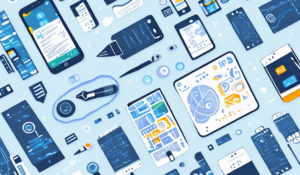Healthcare is a huge industry in the United States, and it is growing. Through 2026, employment in healthcare is expected to grow by 18 percent, which translates to about 2.3 million new jobs, according to figures from the Bureau of Labor Statistics. In fact, healthcare occupations are expected to add more jobs than any other occupational group. Why? Primarily the growth will be due to an aging American population that will require more healthcare services.
If there is an industry where the average person wants the workforce to be fully engaged in what they are doing, it is healthcare. Yet, around one-quarter of healthcare employees are actively disengaged with their work. Only 29 percent is considered “engaged” with their work.
Healthcare differs from most other industries in that it is heavily regulated, it may be run by executives who are far removed from what goes on at the front lines of healthcare delivery, and of course, it is heavily involved with people’s actual lives and their quality of life. Much is demanded from the healthcare system and the people who make it work.
Clearly, having a fully engaged workforce is important to the quality of care delivered. Healthcare organizations must contend with a Byzantine reimbursement environment, high employee turnover, and a regulatory environment that can result in painful consequences if not complied with. Many are finding the use of employee communication apps to be helpful.
Why Employee Engagement Is a Serious Issue in Healthcare
Good employee engagement is essential to success and customer satisfaction whether you make accounting software, run a food truck, or perform brain surgery. Obviously, the stakes are higher with healthcare providers than they are for most industries.
In healthcare, what goes on at the top of the organizational chart has profound implications for what goes on in the clinical environment. A recent Towers-Watson report named leadership as the most important driver of employee engagement in the healthcare industry. Not only must leaders understand the importance of strong employee engagement, they must be willing and prepared to make the business case for better employee engagement to shareholders.
Life and Death
Of course, the main reason employee engagement is particularly crucial in the healthcare industry is that it affects life and death. The engaged clinical staff member is one who never forgets to wash his hands and remembers to check patient IV lines regularly. In healthcare, relatively small actions (or lack thereof) can lead to big consequences, and employee communication apps are great for encouraging these important small actions.
There is also the fact that patients know when their caregiver is truly engaged in what they are doing and when they are just there for the paycheck, and it affects the patient-caregiver dynamic. Skills competency is, of course, paramount, but there is a recognizable difference in receiving care from someone who is fully engaged in their work and someone who is only fulfilling a contractual obligation.
Accountable Care Organizations
Accountable care organizations (ACOs) are healthcare provider networks that use data analytics and health management strategies to improve efficiency and patient outcomes while reducing healthcare costs. They started out as a Medicare payment model in 2012, but now they are seen in private payer settings as well.

Since ACOs are focused on optimizing the quality of care and reducing waste, they rely on employees who are willing to provide the discretionary effort that turns good care into excellent care. ACOs reward the healthcare providers that adroitly balance spending and quality by passing on some of the healthcare cost savings they achieve for third-party payers.
It is easy to see how healthcare systems that are included in ACOs rely on an engaged workforce to allow them to accomplish all the goals of succeeding in such an organization.
High Employee Turnover
Employee turnover is one of the most vexing problems faced by the healthcare industry. What is more, it is expensive. Not only does high employee turnover result in costs like those associated with recruiting, hiring, and training, there are also hidden costs, like potential problems with patient safety, lower staff morale, and the lost productivity associated with a constantly changing staff makeup.
Author and consultant Craig Deao of Huron says that the number one remedy for high employee turnover in the healthcare industry is better employee engagement. He says that communication is one of the keys to better engagement. The conversations that leaders have with low performers, for example, can motivate improvement, and otherwise demonstrate that their actions are noticed. With an employee communication app, this is easier to accomplish.
Challenges of Employee Engagement in a Healthcare Environment
Sure, it may be a challenge to improve employee engagement among the staff of your sports bar, or among the people who run your e-commerce company. However, the challenges of employee engagement are magnified in the healthcare environment. Regulations are strict, and people are expected to perform in an environment that can be remarkably dynamic and unpredictable.
Frankly, healthcare workers are generally so busy that they do not have time for the latest management gimmick that is supposed to make them happy at work, whether that is the annual employee picnic or the random “incentive” gift. Employee engagement is a higher-stakes endeavor for healthcare providers than it is for just about any other industry.
Value-Based Reimbursement
Medicine is transitioning from the traditional fee-for-service (FFS) reimbursement model to a new, value-based reimbursement model, in which reimbursement for services is based on quality and cost. Value-based reimbursement requires healthcare providers to manage the health of certain patient populations, rather than managing the health of the individual patient, as is done under the FFS system.
When payments are linked to outcomes, there are new transaction types. There is no question that value-based reimbursement will take time to get used to. In fact, “change fatigue” is already present in many healthcare environments due to changes wrought by things like the switch from ICD-9 to ICD-10 a few years ago, implementation of the Affordable Care Act, and uncertainty about future healthcare legislation.

Job Stress
In American workers in general, the top three causes of work stress are workload, “people issues,” and work-life balance. It is easy to see how these three issues are present in the lives of healthcare workers, often to a greater degree than to those employed in another sector. The workload is usually heavy and sometimes unpredictable. “People” problems may occur with other employees, with patients, or with patient family members.
Work-life balance can be difficult not only due to long hours but also due to the intensity of many healthcare scenarios. Clinical workers experience miraculous outcomes, but they also experience sad ones, and it is only human to be profoundly affected at times.
Disengaged Leadership
Why should a nurse, administrative assistant, custodian, or physician assistant fully engage with their work when senior leadership seems to exist in an entirely different universe? Many of them do fully engage regardless of what goes on in the executive suite, but the positive effect of top leadership on engagement cannot be overstated.
Leadership attitudes actually affect patients as well. A study of acute care facilities within a US health organization found that a patient’s propensity to recommend a given facility was 11 percent higher when employees and leaders were on the same page as far as being committed to the common goal of quality, and when patient-facing employees believed they had both good advancement opportunities and the equipment and supplies they needed to do their work.
Potential Benefits of Better Healthcare Employee Engagement
Reduced employee turnover is one of the most important benefits of improved employee engagement. Helping employees experience real engagement in their work requires three fundamental actions on the part of the employer:
- Providing employees with the tools and equipment necessary to do their jobs well
- Offering training, development, and advancement opportunities
- Providing ongoing communication with employees long after the new employee onboarding process is over
Amazingly, many of these key actions can be addressed effectively and efficiently with the use of an employee engagement app, or more specifically, an employee communication app. Employees want to know they are plugged into their work organization, that their feedback is valuable, and that what they do is appreciated. The employee communication app can be a fantastic tool for accomplishing this at a reasonable cost, with strong ROI.
Better patient outcomes are another benefit of having an engaged healthcare workforce. A 2005 Gallup study of nurse engagement and its relationship to patient outcomes shows that employee engagement is not just a flavor-of-the-week trend, but a longstanding predictor of better outcomes. In this study, the engagement level of the nurses was the number one predictor of mortality – even more predictive than the nurse-to-patient ratio! Furthermore, as engagement levels increased, both absenteeism and turnover decreased, and these two factors directly influence revenues.

An engaged nursing staff is invaluable to any healthcare organization.
Higher levels of employee engagement lead to higher revenues. A 2012 study found that companies ranked at or near the top for employee engagement had 10 percent higher customer metrics, 21 percent higher productivity, and 22 percent higher profitability. Moreover, Forbes consistently shows that the companies that make their Best Companies to Work For lists regularly have higher revenues, to the tune of 22.2 percent. So when you make an effort to better engage employees with tools like employee communication apps, you are making a direct investment that should show up as a healthier bottom line.
Finally, though it is important to distinguish between engaged employees and happy employees, it is also important to realize that better-engaged employees are generally happier employees, though the converse is not necessarily true. Employee happiness is largely controlled by the employee themselves, while employee engagement is largely controlled by the employer. The good news is that the two concepts tend to be mutually reinforcing (except for in truly dismal workplaces), so the better you are able to engage your workers in heartfelt commitment to what they do, the happier they (and you) will be.
Demand These Features in Your Healthcare Employee Engagement App
Employee engagement apps cannot singlehandedly fix a workplace that is irretrievably broken. That said, the effects of a well-designed employee communication app can be phenomenal. With the right healthcare employee communication app, employers can:
- Push outstanding, relevant content to targeted employees at exactly the right time
- Receive ongoing feedback that is analyzed so you can gather new insights into employee engagement
- Deliver training content and keep employees informed of advancement and career development opportunities
- Incentivize employee actions through rewards and recognition
With hubEngage, the healthcare facility can create a custom employee communication app that goes right to the heart of the issues that affect employee engagement levels and hence, the overall success of the individuals and organization as a whole. HubEngage understands how diverse the healthcare workforce is, and that is why we make it easy for employers in the healthcare industry to accurately target recipients of app content, so everyone is not continuously blasted with information that may or may not be relevant to them.
Job title, shift schedule, proximity location, and other factors allow healthcare employers to deliver exactly the right employee communication app content to exactly the right people, at precisely the right time. You can communicate consistently, regularly solicit feedback, and generally show employees every day that their work is valuable, and that they are valuable members of the healthcare delivery team. Built-in analytics allow employers to develop accurate insights about employee engagement levels so that course corrections can be made in a timely manner.
As important as employee engagement is in general, it is even more important in the healthcare industry. It is the key to navigating changes like value-based reimbursement, maximizing regulation compliance, and ensuring employees are excited to come to work and take care of people. Intrigued? You can try hubEngage for free by signing up for a trial. Employee engagement is simply too important to the healthcare industry to be an afterthought.













